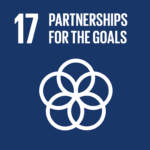Typhoon Gaemi, known locally as Carina, did not make landfall in the Philippines but its powerful outer bands dumped more than 300 millimeters (12 inches) of rain on the Manila region and parts of Luzon island.
In a stark reminder of the Philippines’ vulnerability to extreme weather, Typhoon Gaemi has transformed the streets of Manila into rivers, forcing the closure of schools and offices, and the cancellation of flights. The government declared a state of calamity on Wednesday in a region home to 13 million people, as floodwaters in some areas reached the height of one-story buildings.
RELEVANT SUSTAINABLE GOALS



Typhoon Gaemi
The storm, known locally as Carina, did not make landfall in the Philippines but its powerful outer bands dumped more than 300 millimeters (12 inches) of rain on the Manila region and parts of Luzon island. The deluge, exacerbated by the southwest monsoon, has led to at least 13 deaths and displaced over 600,000 people, according to Philippine authorities.
“No one is prepared for this, even though we anticipated the typhoon, we could not have predicted the scale of rainfall,” said Ben Ramirez Narag, a local councilor in Cainta, Rizal province, where floodwaters remained waist-deep on Thursday.
The disaster has reignited debates about the Philippines’ disaster preparedness and the increasing impacts of climate change. Khevin Yu, a campaigner for Greenpeace Philippines, urged President Marcos to prioritize climate action, stating, “These torrential rains give yet another picture of extreme weather in a climate changed world.”
Cities Reach Their Limit
As Typhoon Gaemi moved northward, it made landfall in Taiwan as the equivalent of a Category 3 hurricane, causing further devastation. The storm’s impact extended to China’s southeast coastal Fujian province, adding to the country’s recent struggles with extreme rain and flooding.
The Philippines, which experiences several typhoons annually, faces growing challenges as climate change makes storms more unpredictable and intense. A study published last year predicted that parts of Asia’s largest cities, including Manila, could be underwater by 2100 due to rising sea levels.
President Marcos, in his recent state of the nation address, highlighted the completion of over 5,500 flood control projects. However, critics argue that more robust measures are needed to build resilience against extreme weather events.
As Manila grapples with the aftermath of Typhoon Gaemi, the disaster serves as a grim reminder of the urgent need for comprehensive climate adaptation strategies in vulnerable regions. The Philippines’ experience underscores the global imperative to address climate change and its disproportionate impact on developing nations.
Lead image courtesy of Lisa Marie David / REUTERS ( bus wades through a flooded road following heavy rains brought by Typhoon Gaemi, in Manila, Philippines.)
You may also be interested in :
Bracing for La Niña : Indonesia Prepares For Increased Rainfall


